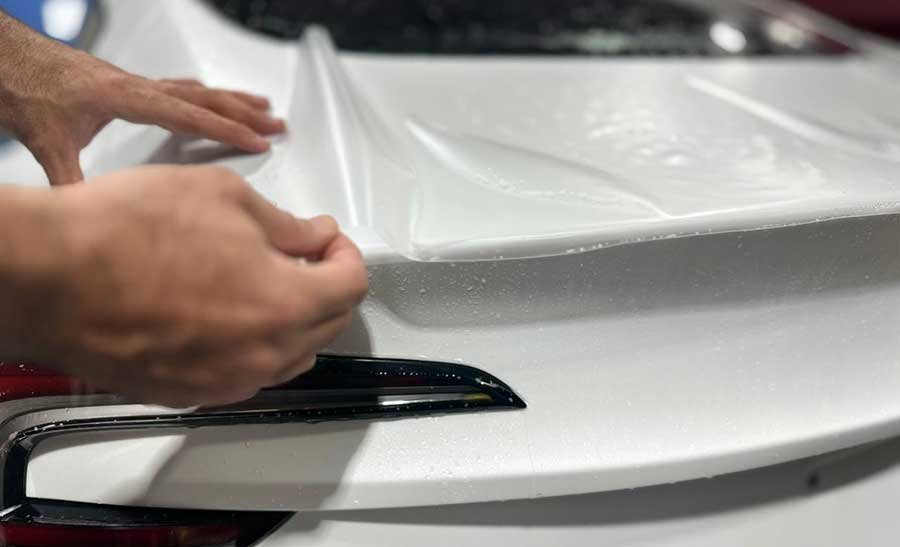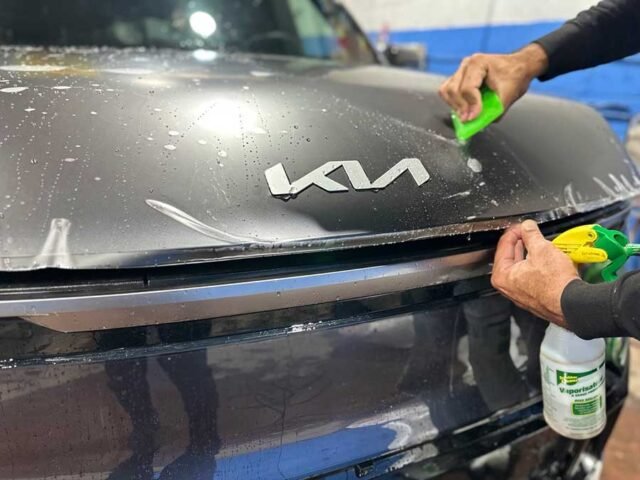• Introduction
When your car gets a fresh paint job, the last thing you want is to risk damaging that pristine finish. That’s where Paint Protection Film (PPF) comes in. To fully protect your investment, it’s crucial to apply PPF after painting your vehicle. PPF acts as a transparent, self-healing layer that shields your car from scratches, chips, and environmental contaminants.
Many car owners wonder: when to apply paint protection film after a repaint? The timing isn’t just about scheduling—it’s crucial for ensuring proper adhesion and avoiding costly damage. Applying PPF after repaint requires patience and a clear understanding of the curing process.
GTautomtl
Contact us
Contact us today – Experience Endless Shine, Unbeatable Protection.
• Why It’s Important to Wait to You Apply PPF After Painting
If you’re thinking about PPF on new paint, timing is everything. Fresh paint and PPF don’t always play nicely—at least not immediately. That’s because automotive paint needs time to cure, a process during which solvents evaporate and the paint hardens fully.
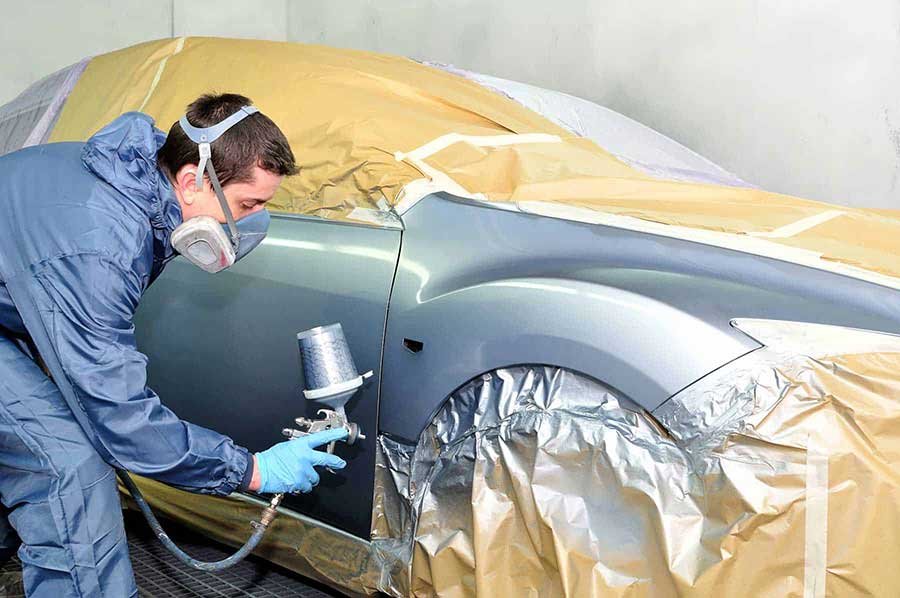
Applying PPF after a paint job too early can trap gases and solvents under the film. This can cause bubbling, adhesion failure, or even damage to the paint itself. In some cases, installers have seen paint lift off during film removal because the surface wasn’t fully cured. So, understanding the waiting time before PPF is key to preserving both the paint and your investment.
• Factory Paint vs Repainted Surfaces
One of the most important distinctions to make is between factory (OEM) paint and aftermarket repaints. Factory paint is typically baked in industrial ovens and fully cured before the vehicle even leaves the assembly line. This means PPF can usually be applied to factory paint right away.
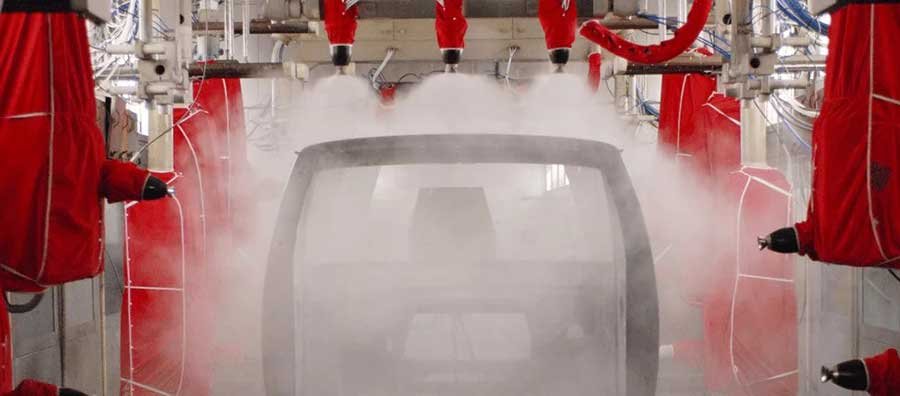
However, PPF after respray is a different story. Body shops often use air-drying or low-temperature baking, which doesn’t cure the paint as thoroughly or quickly. Even when heat lamps or infrared dryers are used, a full cure might still take weeks. That’s why applying PPF after repaint requires more caution than on a new factory-finished vehicle.
• Recommended Waiting Period
So, how long should you wait? The industry standard recommendation is typically between 30 to 90 days, depending on factors like:
• Type of paint (urethane, enamel, lacquer, etc.)
• Curing method (air-dried vs heat-cured)
• Humidity and ambient temperature
Professional installers often suggest waiting at least 30 days before applying PPF on new paint, but many err on the side of caution with a full 60- to 90-day window. In some cases, shops may recommend as little as two weeks if infrared curing was used and the paint feels fully hardened—but only when the installer is confident in the paint shop’s process.
• How to Know If Paint Is Ready
Still unsure? There are a few ways to tell if your vehicle is ready for PPF:
• Visual inspection: The paint should have a consistent gloss with no haze, dull spots, or sticky areas.
• Touch test: The surface should feel dry and firm—no softness or tackiness.
• Paint thickness gauge: Some professionals use this to assess whether the paint has cured sufficiently.
• VOC release monitoring: Measuring Volatile Organic Compound release can indicate whether the off-gassing process is complete.
Most importantly, ask your body shop directly. A reputable shop will know the curing time for the specific products they used and can provide a timeline for when it’s safe to apply PPF after repaint.
• Can Accelerators or Ceramic Coatings Help?
If you’re in a rush, is there a safe way to speed things up? In some cases, yes. Infrared curing (IR curing) systems can significantly reduce the waiting time before PPF. These systems use heat to accelerate solvent evaporation and harden the paint faster. However, even with IR curing, most professionals still recommend a minimum of 14 to 21 days before applying film.
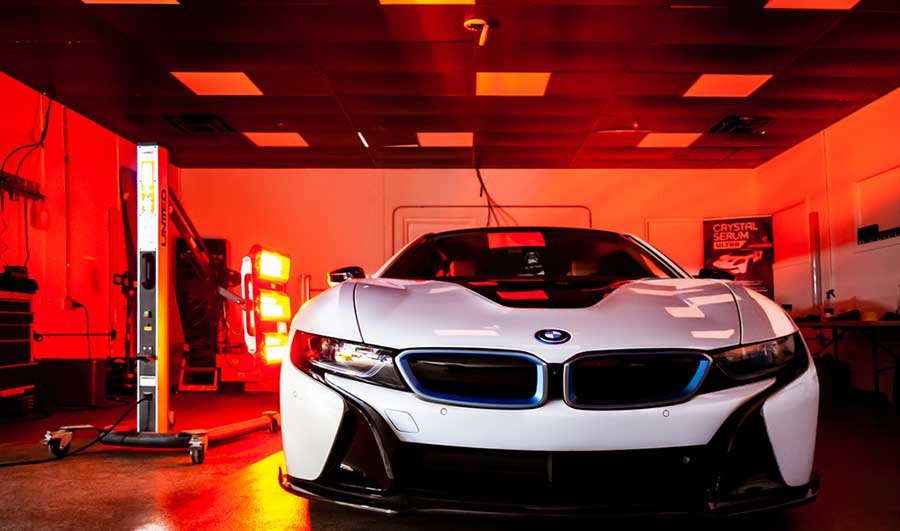
What about ceramic coatings? While ceramic coatings can add a layer of protection, they are not a substitute for PPF. Think of ceramic as water-repellent armor and PPF as a physical shield. They can work together—some car owners apply ceramic coating over PPF for added protection and easier maintenance.



